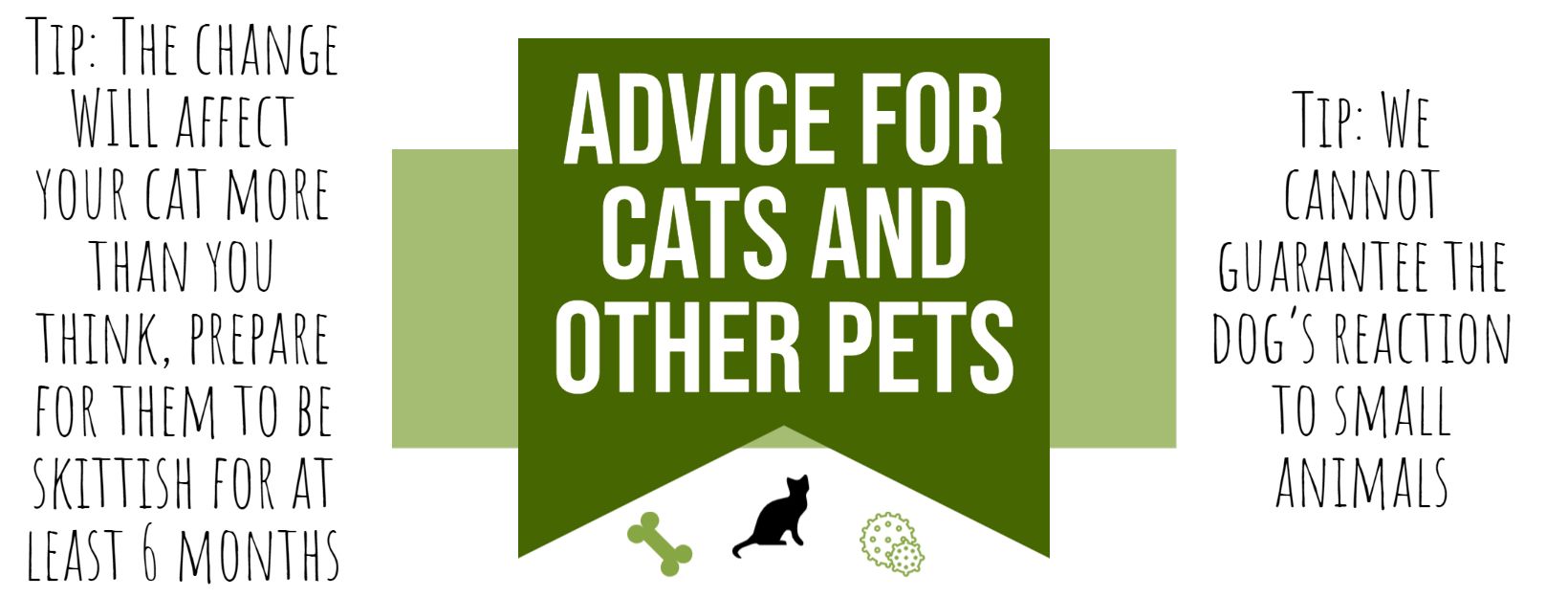
DO NOT look to take on a cat unless your dog has been cat-tested via Oakwood Dog Rescue and is assessed as okay
Cats are territorial, stubborn animals that do not like change. Adding a canine into the household can really upset them, and most cat owners are quick to return the dog once they notice that the cat's behaviour has changed.
Please don't think that we dislike cats, I personally have my own cat and knew taking on any dog was going to be a challenge! In fact it took my own cat 6 months to adapt to living with a dog. Despite living with a dog prior and being a cat-testing moggy, once a new dog was introduced to the household, it took my cat another 6 months to accept that the dog was here to stay.
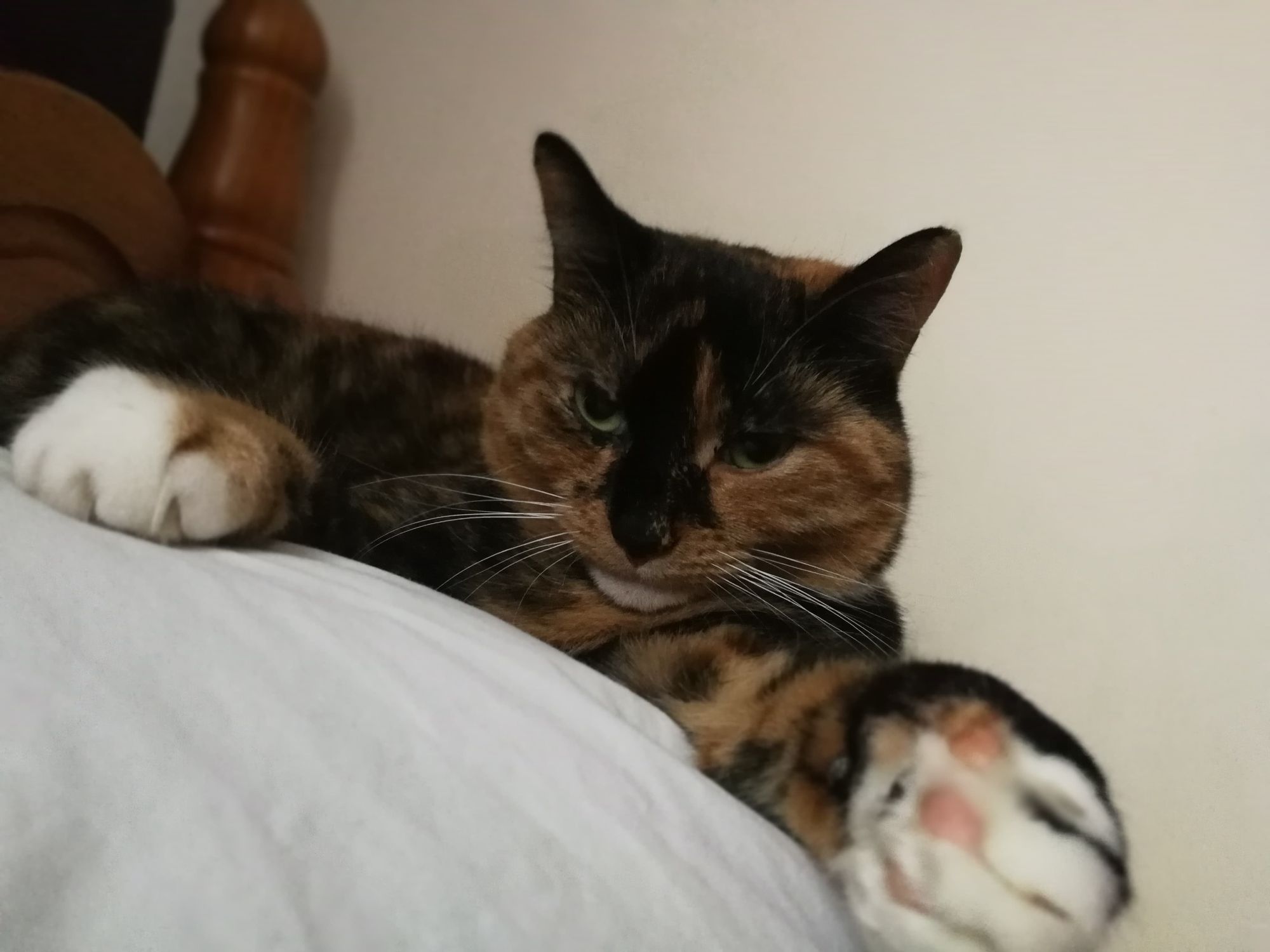
Even if your cat has lived with a dog previously, expect your cat to be stressed and unsure about your new addition. It is important to understand that both your new rescue dog and your cat will be going through an acceptance process. It is very important that everything is done at each individual animal's pace. Cats need lots of time to adjust and settle, as does your new rescue dog
Behaviours Adopters Need To Be Aware Of:
- Throughout the first few weeks your cat may display such behaviours as: hissing, stiffness, displaying hackles or running and hiding which are all typical feline responses to a change in circumstances.
- You may find that your cat will stare at the dog when anxious - which can make the dog very uncomfortable. Move them further apart from each other when this is spotted.
- You may find that the dog reacts adversely/defensively towards the cat because they feel threatened or anxious about how the cat is reacting towards them.
- Some cats may choose to run as a fear response which often results in the dog chasing after the cat - it is important to remember that it is an instinctive response for a dog to chase a fast moving object so must not be scolded or reprimanded if they do - it is your responsibility to ensure that chasing is prevented as much as possible to allow a positive relationship to develop
Remember: ALL dogs will have some form of prey drive and are likely to chase a cat if it runs. The cat and dog must be separate when not supervised and the cat must have its own space to retreat to.
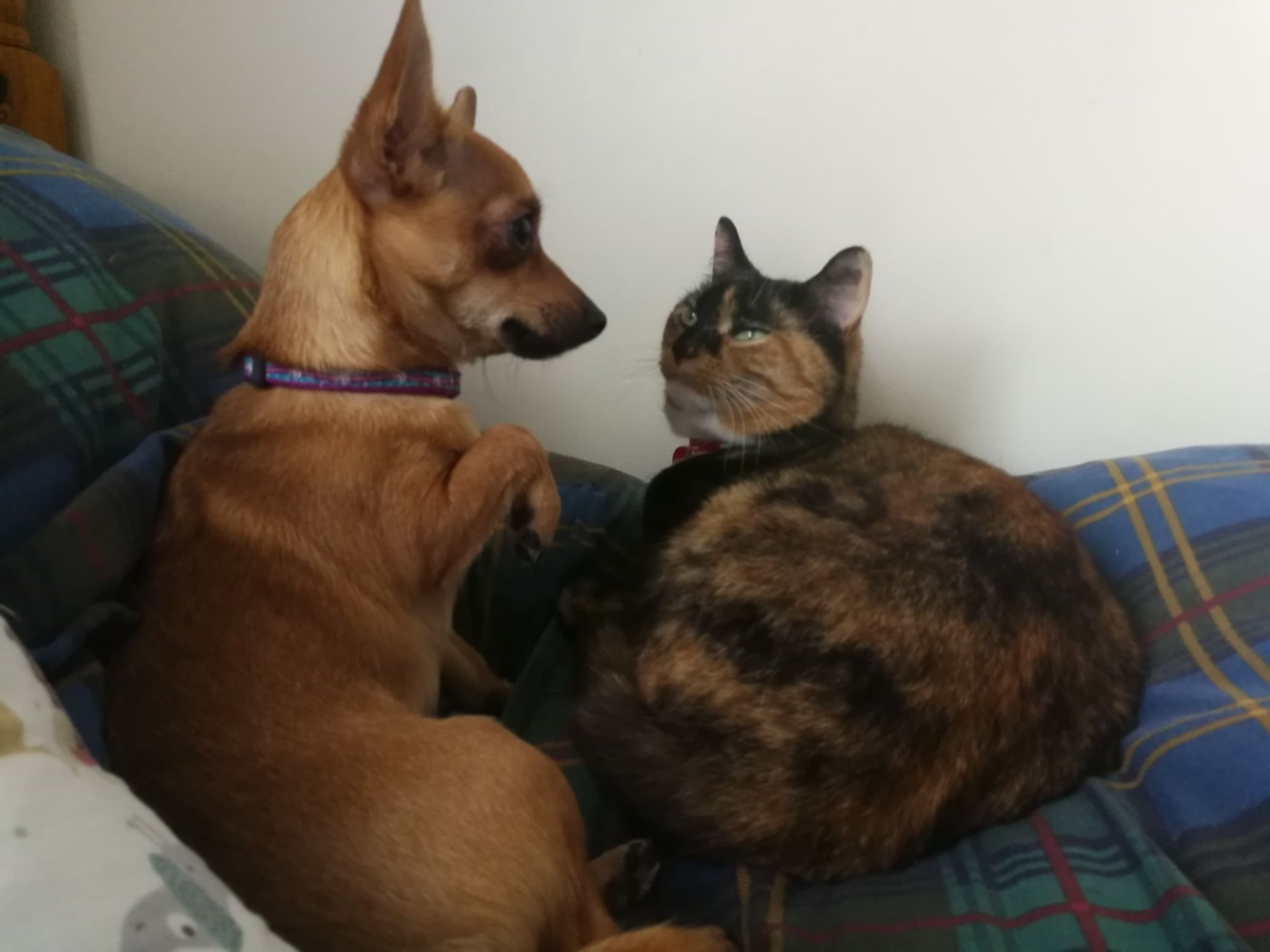
The number one rule with dog and cat introduction:
Do NOT force interaction or rush them to be in close proximity to each other - this can be dangerous and lead to fights or damage a relationship in the early stages of development which can quickly escalate.
- Go at each animals pace: be observant of small anxious behavioural cues and give them space when these are seen - by either picking up the cat or moving the dog - move whichever is the more confident animal.
- Dogs: whale eye, stiffness, ears back, tail low/tucked
- Cats: growling, hackles, dilated pupils, stiffness, trying to hide, yawning
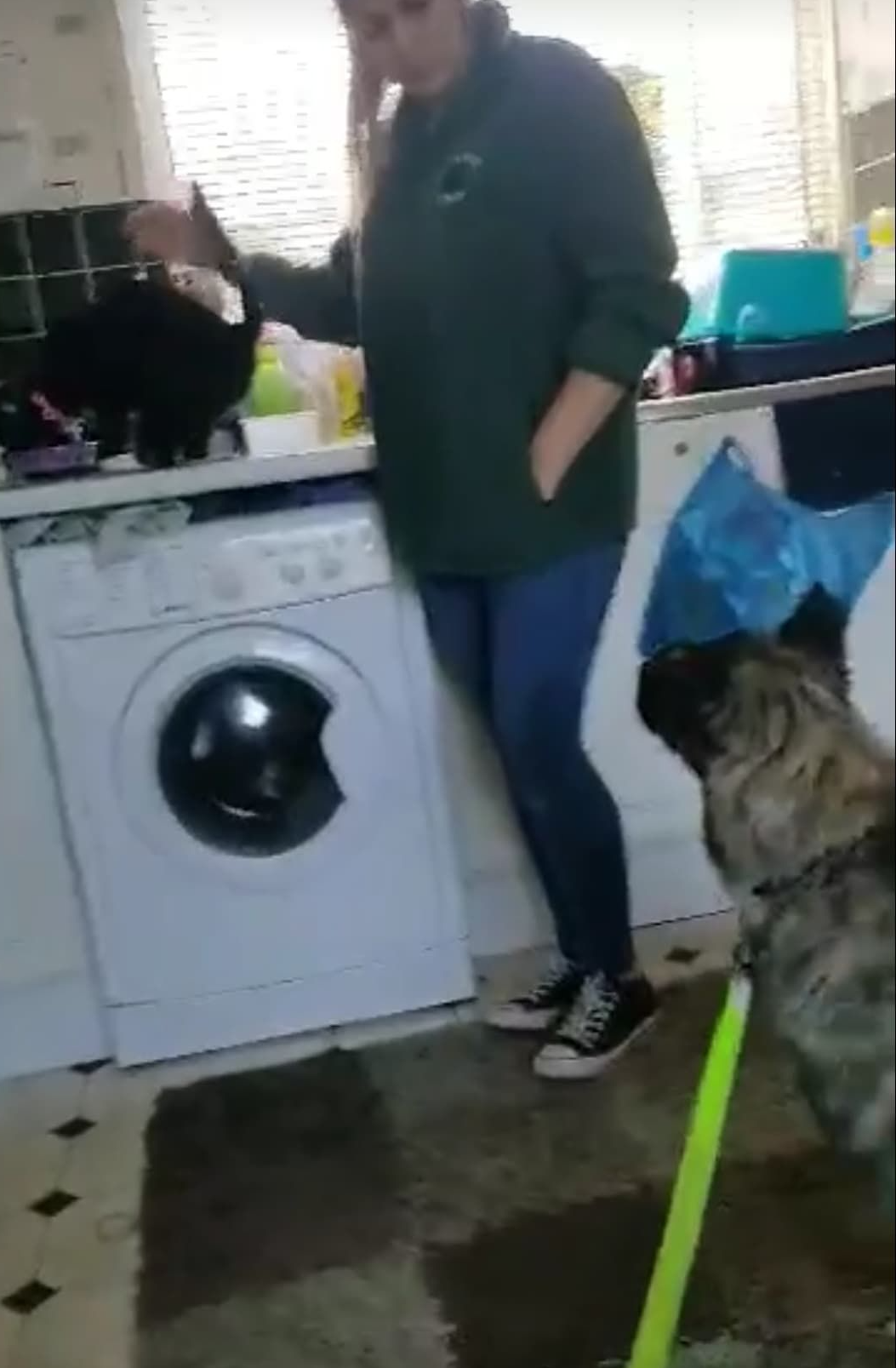
Introducing the dog to the cat
- Be calm and confident about it, don't make a big deal or event out of it, act normally. If you're stressed or worried all the animals will pick up on this and behave accordingly. They're way more perceptive than we think!
- Do it indoors, if the cats are outside and there's a window/fence in the way or something similar then you're more likely to get reactive behaviour like barking.
- Let the cat be up on a table or windowsill out of the way, give them something to eat to keep them engaged and more relaxed, but not within stealing distance of the dog so up on top of the table for example.
- Let the dog into the room wearing the trailing line, don't overly restrain them, a nice loose lead and if they are doing well drop it on the floor let it trail around after them.
- Use treats to keep your dog occupied (high value like chicken, ham etc.) This way the dog is seeing the cat but mainly paying attention to you. The dog is also getting positive things as a result of the cat being around. If the dog starts trying to run at the cat being silly, barking etc you have the trailing line to step on, pick up and also perform timeouts as needed.
Time out reminder: Pick up lead but don't talk to the dog. They get taken to another room, close the door with the dog on the other side but lead in your hand so they are on the other side of the door to you, with the lead still connecting you. Count to 5, let them back in the room if they have calmed down and we return to normal. If the dog is not calming, pick this up another day.
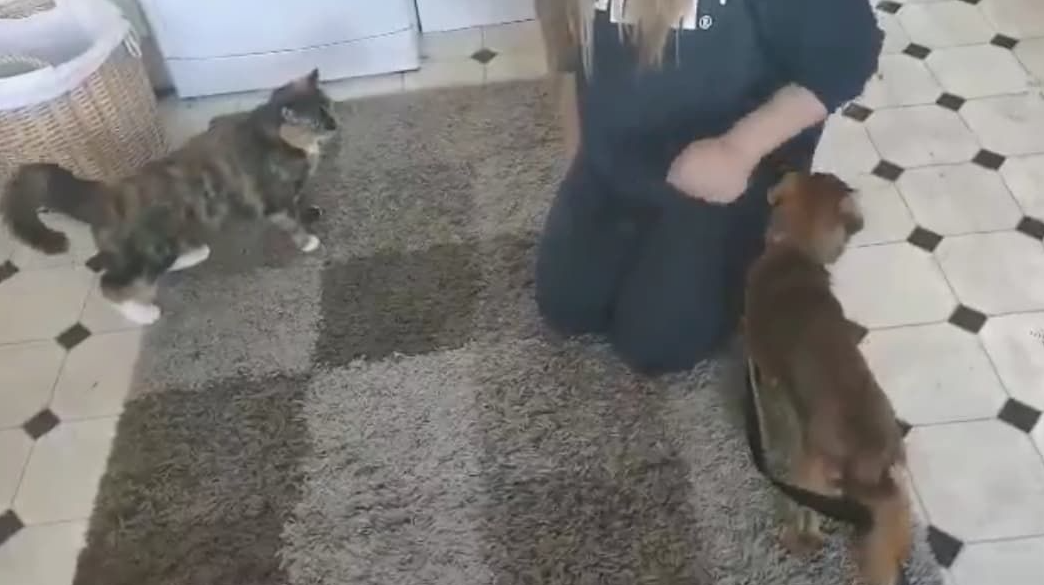
- Start off at a distance, and move closer, keep rewarding with food. Then leave the room before barking or lunging occurs.
- Keep it short and positive, better to have a few short positive experience for both animals, than a prolonged one which doesn't end positively.
- Repeat a couple of times each day.
- They will slowly get used to seeing each other and it being a rewarding experience for both animals as they all get food rewards (but no feeding next to each other as this will promote squabbling over food)
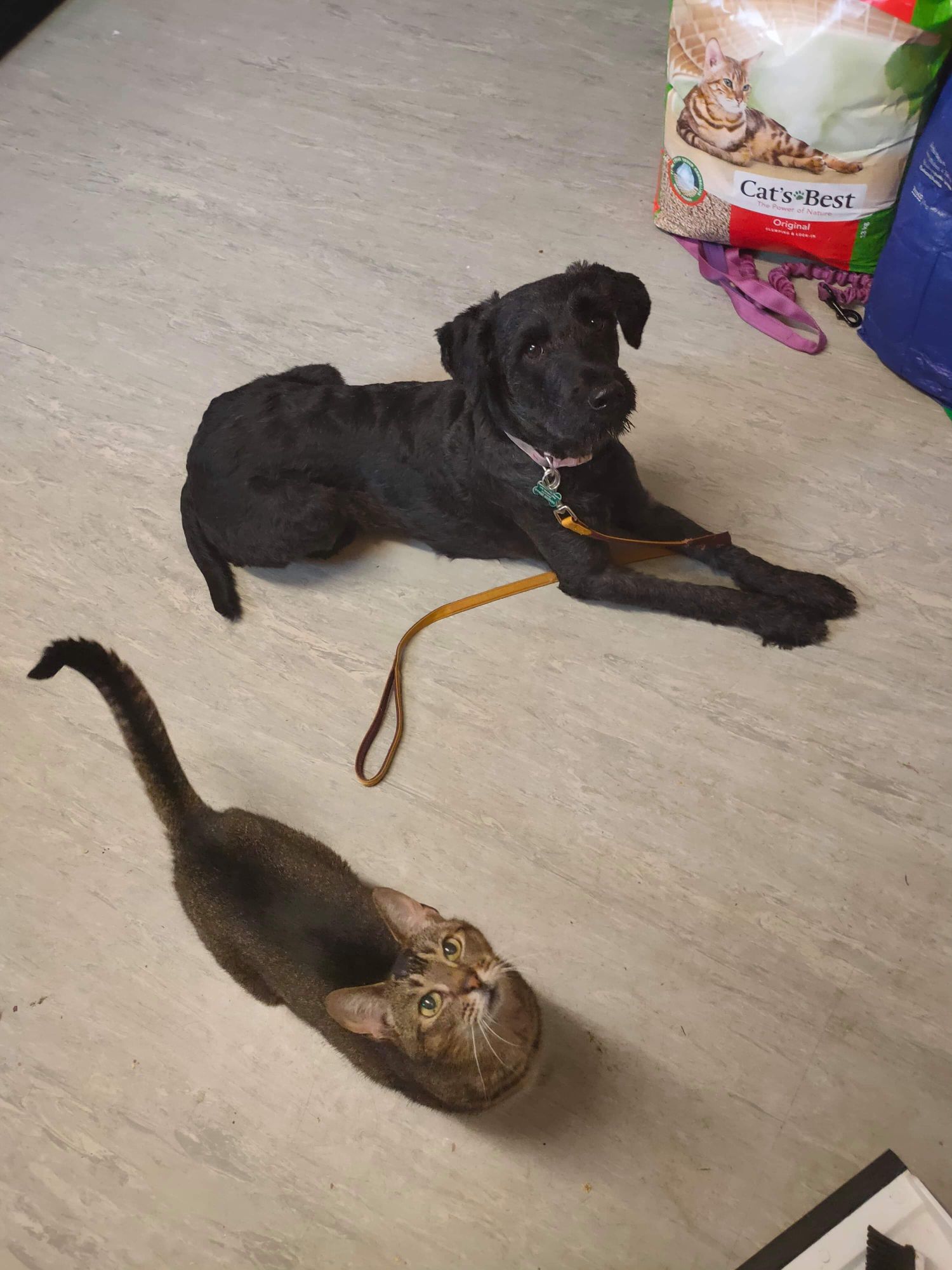
Prevention Techniques:
- Baby gates are a must! They provide the cats with an easy escape and halts any chasing behaviour quickly. Both pets can also observe each other from a safe distance.
- Baby gates can be used to safely provide both cat and dog positive reinforcements with the other in sight - but this must be done with as much space between them as possible so as not to push them too quickly and prevent any issues with food aggression. Ie. Start off at 10ft apart, dependant on house layout, work up to 8ft apart, then move to 6ft very gradually - allow at minimum a week for them to get used to each reduction of space. Going too quick will result in big step backs.
- Keep a long trailing line on the dog at all times when the cat and dog have access to each other so you can safely move the dog away or time out the dog for inappropriate behaviour. Do this until you are sure they are comfortable with each other.
- Cats get lots of confidence from being up high. It is recommended that you allow your cat access to, cat trees, higher surfaces, “cat shelves” and wall/window hammocks ect. Providing one exit route is not enough. It is recommended that you try to provide as many of these as possible to allow the cat to escape from the situation if they are not comfortable.
- Ensure the dog is blocked from accessing cat food/litter tray (both cat food and cat poop are very enticing to a dog - they are a high meat source and grab their attention) - you can feed on a window sill or block an area for both using a baby gate. Ensure you lift both cat and dog food bowls after use. Both cats and dogs can become protective over their food bowls if they feel like the opposing party are going to steal their food. It is best to avoid creating an opportunity for an animal to guard something.
- Scent swapping is a useful way of introducing them to each other safely. You can do this using bedding from both animals and also by stroking one and then allowing the other to sniff your hand.
- Until you are 100% confident that both animals are happily co-living together do not allow them to mix unsupervised. When you leave them ensure they are safely shut away from each other via shutting doors and/or crating the dog.
- Commands to work on with the dog that can help the process: leave it, stay, focus
Despite the rescue dog being cat tested and deemed to be potentially compatible to live with cats, success for this very much depends on the ability of the adopters to follow this guidance and not rush the process.
Small Animals
Rehoming a dog with small animals is tricky. Especially with our rescues living on the streets for a portion of their lives.
You need to understand that, in the nicest way, small animals are prey animals and it is highly likely that the rescues will have caught and survived off of smaller animals in Romania.
We can NEVER guarantee a dog's response to a small animal and ALWAYS advise keeping them separate. Which means the dog should not have access to the small animal.
Slow and heavily monitored introductions are at the owner's risk.
REMEMBER: Cages, hutches, vivariums are designed to keep your small animal in. They are NOT designed to keep animals out.
- Never leave the dog and the small animal unsupervised even for a short period of time.
- Dogs MUST be shut away from the pet when you go out, go to bed or are not in the same room as them.